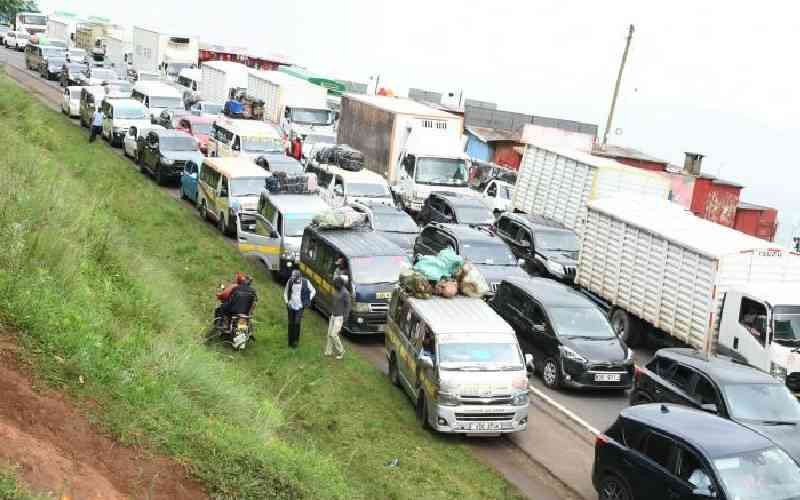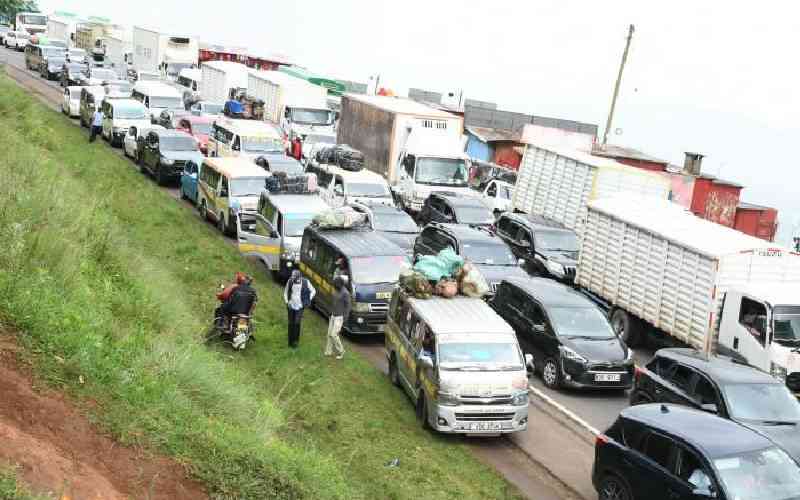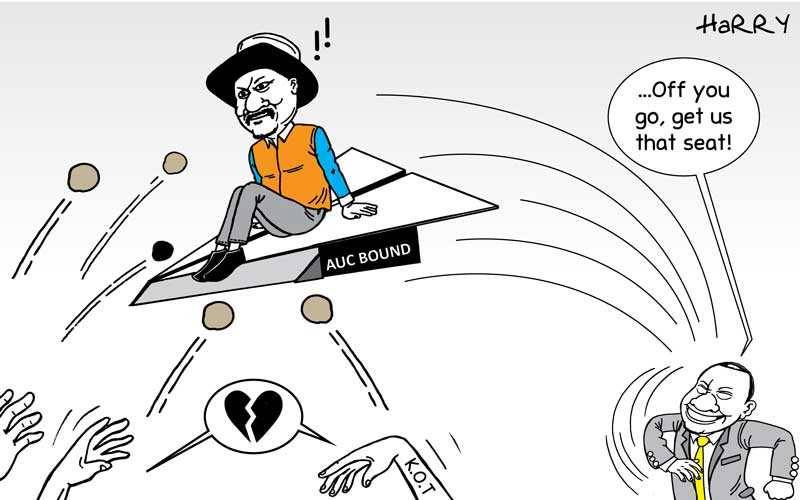The traffic gridlock in Nairobi and other towns unearths an unseemly failure of the Government and the people of Kenya to care for the poorest members of our society.
Outside State House, there is an old blind lady, accompanied by a child who should be in school, who spends the whole day walking from vehicle to vehicle asking for money.
A few people drop coins into the cup she shakes at every vehicle window and she would be lucky to raise Sh300 in a day.
She is unlikely to afford a basic meal and clothing for herself and the child. If she or the child falls ill, they cannot afford to see a doctor, and will probably buy some cheap fake drugs in an illegal pharmacy, or just pray to get well.
Of course, the child is unlikely to do much better than begging in future, as she is missing out on education. These and other Kenyans begging on streets eat by mere luck, survive by sheer providence and live without a shard of hope in the future.
The Kenya government will spend Sh2.6 trillion ($ 25 billion) in the fiscal year 2017-18, yet it is allocating only Sh17 billion ($ 167 million), or 0.7 per cent of this budget, for assisting some of these very poor people, which is woefully inadequate.
GRAND COALITION
Since the days of the Grand Coalition administration of Mwai Kibaki and Raila Odinga, the Kenya government has sought to expand social protection of poor people under the National Safety Net Programme, called 'Inua Jamii' managed by the Ministry of East African Community (EAC), Labour and Social Protection. Under the Inua Jamii programme, the Government provides some cash to poor orphans and vulnerable children, people aged above 65 years and those with severe disabilities.
Whereas the safety net programme has expanded from 227,969 beneficiaries in 2013 to 718,383 beneficiaries in 2017, many more needy people are not reached by Inua Jamii.
For instance, the number of people aged 65 years and above in Kenya is estimated to be 2.2 per cent of the population by Kenya Demographic and Health Survey 2014, which are about 1,012,000 persons.
It is hard to tell how many of these elderly persons live in extreme poverty, lack pensions, have no family support and lack health insurance because the Kenya National Bureau of Statistics (KNBS) has not done any recent survey on these parameters.
POVERTY LINE
But using the 2005 KNBS estimate for the population below the national poverty line of 45.9 per cent, and keeping in mind that poverty among the elderly can be above the national average; a substantial number of these elders are poor and need assistance.
About 9.9 per cent of children under 18 years of age, which is about 2.3 million children, are orphans with one or both parents dead, based on KNBS Analytical Report on Population Projections 2012 and the Kenya Demographic and Health Survey 2014.
Stay informed. Subscribe to our newsletter
A significant number of these orphaned children and others who are vulnerable need help because child poverty involves deprivation of adequate income to meet nutritional needs, as well as absence of protection from abuse and neglect; failure to attend school; and inadequate healthcare.
MONTHLY STIPENDS
The cash transfer value to poor orphans and vulnerable children, elders and persons with severe disabilities was set at Sh2,000 per beneficiary household per month in December 2011, but since then, inflation has increased significantly.
In fact, the amount the beneficiaries should be receiving today is Sh2,885 per month given that the Consumer Price Index was 130.09 in December 2011 and stood at 187.64 in May 2017.
The Sh2,500 per month beneficiaries receive now in the Inua Jamii programme is well below the inflation-adjusted amount they should be receiving and the purchasing power of these poor people has deteriorated significantly.
They cannot afford the expensive 'unga', milk, sugar, education and healthcare costs at current prices.This view is supported by the 'Inua Jamii Progress Report' of March 2016 authored by the Ministry of EAC, Labour and Social Protection.
In budget terms, if Government doubled the number of beneficiaries to 1,436,766 and paid them the inflation-adjusted amount of Sh2,885 per month, it would spend just Sh49.7 billion per year, which is a mere 1.91 per cent of the 2017-18 budgets, a very reasonable and valuable expenditure.
GOVERNMENT RESPONSIBILITY
It is a constitutional responsibility of the government to support people in extreme need.Article 43 (1) of the Constitution of Kenya provides that every person has the right to the highest attainable standard of health, education, adequate housing, adequate food of acceptable quality, sanitation, clean water and to social security, including non-contributory social security for people who are unable to support themselves.
 The Standard Group Plc is a
multi-media organization with investments in media platforms spanning newspaper
print operations, television, radio broadcasting, digital and online services. The
Standard Group is recognized as a leading multi-media house in Kenya with a key
influence in matters of national and international interest.
The Standard Group Plc is a
multi-media organization with investments in media platforms spanning newspaper
print operations, television, radio broadcasting, digital and online services. The
Standard Group is recognized as a leading multi-media house in Kenya with a key
influence in matters of national and international interest.
 The Standard Group Plc is a
multi-media organization with investments in media platforms spanning newspaper
print operations, television, radio broadcasting, digital and online services. The
Standard Group is recognized as a leading multi-media house in Kenya with a key
influence in matters of national and international interest.
The Standard Group Plc is a
multi-media organization with investments in media platforms spanning newspaper
print operations, television, radio broadcasting, digital and online services. The
Standard Group is recognized as a leading multi-media house in Kenya with a key
influence in matters of national and international interest.








